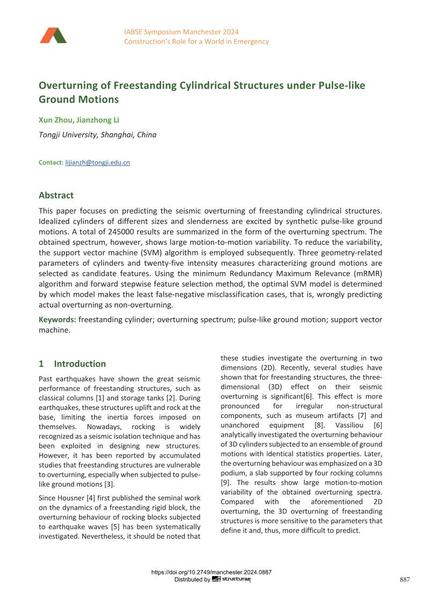Overturning of Freestanding Cylindrical Structures under Pulse-like Ground Motions

|
|
|||||||||||
Détails bibliographiques
| Auteur(s): |
Xun Zhou
(Tongji University, Shanghai, China)
Jianzhong Li (Tongji University, Shanghai, China) |
||||
|---|---|---|---|---|---|
| Médium: | papier de conférence | ||||
| Langue(s): | anglais | ||||
| Conférence: | IABSE Symposium: Construction’s Role for a World in Emergency, Manchester, United Kingdom, 10-14 April 2024 | ||||
| Publié dans: | IABSE Symposium Manchester 2024 | ||||
|
|||||
| Page(s): | 887-895 | ||||
| Nombre total de pages (du PDF): | 9 | ||||
| DOI: | 10.2749/manchester.2024.0887 | ||||
| Abstrait: |
This paper focuses on predicting the seismic overturning of freestanding cylindrical structures. Idealized cylinders of different sizes and slenderness are excited by synthetic pulse-like ground motions. A total of 245000 results are summarized in the form of the overturning spectrum. The obtained spectrum, however, shows large motion-to-motion variability. To reduce the variability, the support vector machine (SVM) algorithm is employed subsequently. Three geometry-related parameters of cylinders and twenty-five intensity measures characterizing ground motions are selected as candidate features. Using the minimum Redundancy Maximum Relevance (mRMR) algorithm and forward stepwise feature selection method, the optimal SVM model is determined by which model makes the least false-negative misclassification cases, that is, wrongly predicting actual overturning as non-overturning. |
||||
